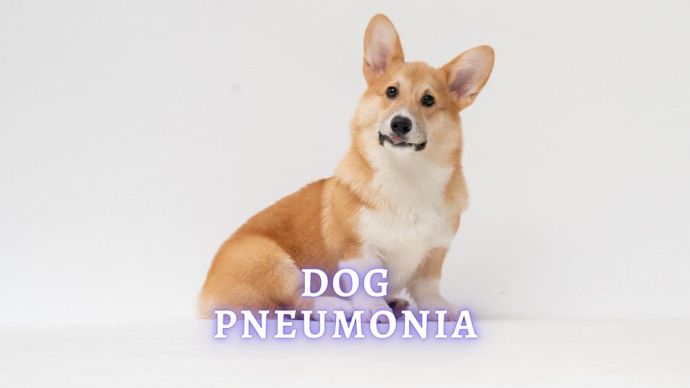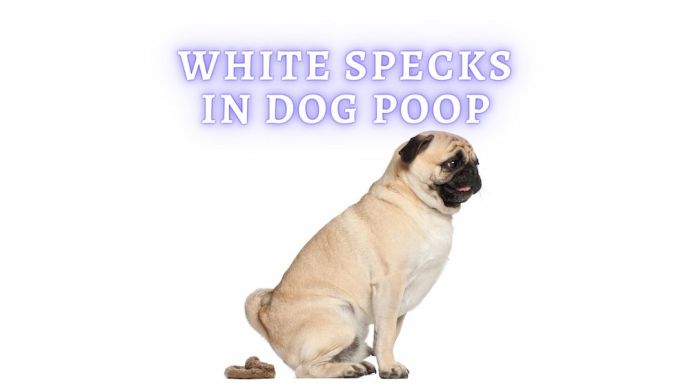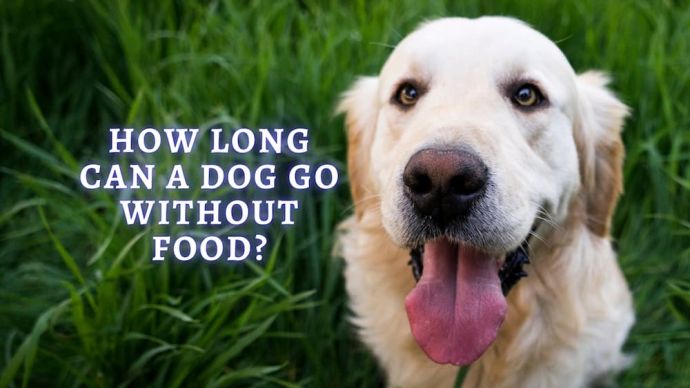Dog Constipation: Causes, Symptoms, Remedies and Prevention
Written by:
Author: Vicki Smirnova
Vicki Smirnova is a professional writer and editor who adores animals and helps readers get along well with their pets. She has been working in digital media for more than 5 years and has great experience writing content about lifestyle, including pets. Vicki specializes in dog health and nutrition, cat feeding, dog training. She is an aquarium lover and is passionate to write about fish care at home. Also, Vicki headed several websites and worked as a news editor.
View all 244 articlesLearn about our editorial process and veterinary review board.
Reviewed by:
Veterinary review
by Dr. Sara Ochoa
Dr. Sara Redding Ochoa is a veterinarian with many years of experience and higher education. During her time in veterinary school she was able to learn form some of the most well-known veterinarians from all over the world. Sara lives happily with her husband Greg and her babies Ruby the schnoodle, and Bam-Bam her bunny. Dr. Sara Redding Ochoa has a passion and love for animals that makes her a wonderful asset to our team.
View all 13 articlesLearn about our veterinary review board
Viewed: 103
Updated on: 04/14/2023
Constipation is a serious problem. This causes discomfort to the dog and can also be a sign of a serious gastrointestinal tract disease (GIT), which the puppy has been suffering from for some time.
Causes of Dog Constipation
Several different gastrointestinal conditions can cause constipation and have serious consequences if left untreated. The causes of constipation can vary from the presence of a foreign body in the intestines and other parts of the gastrointestinal tract to a violation of the diet or poor nutrition. The main reasons are as follows:
- Inactive lifestyle. The work of the digestive system is disturbed if the pet spends most of the time in a supine position. The dog needs constant movement. Therefore, you need to walk with her more often so that she empties her intestines and actively plays.
- Feeding. An unbalanced diet can cause constipation. The dog must regularly receive fiber and the required amount of fluid, and many owners feed the animal with dry food or only protein food, which is a gross mistake. To normalize digestion, plant foods should be included in the diet.
- Binge eating. If you feed your four-legged friend very often, then the food will not have time to be digested; as a result, it accumulates, is pressed over time, and then dries out. As a result, the stool becomes hard, so it does not pass well through the gastrointestinal tract. So the owner should reasonably limit the food of his dog.
- Atony of the intestine. It is observed in dysbacteriosis and some infectious diseases. A decrease in the peristalsis of the intestinal walls leads to the fact that the patency of feces is impaired. Over time, the feces are compressed and dry, and as a result, they come out with great effort, which causes severe pain.
- The presence of a foreign body in the intestine. Foreign objects can get into the dog’s stomach and intestines: a piece of stick, bones, cotton wool, and a plastic bag. Some pets develop neoplasms in the intestines. All this prevents the passage of feces. As a result, the animal cannot empty itself normally.
- Diseases of the nervous system. The autonomic nervous system is responsible for the activity of the intestines. Violation of its work changes the activity of contraction of the smooth muscles of the intestine, which leads to diarrhea or constipation.
- Diseases of the spine. As in the previous case, constipation is associated with impaired innervation, but here the root cause is damage to the spinal cord. The process is complicated by the fact that the animal is not able to move actively, and leads an inactive lifestyle.
What are the most common symptoms?
Usually, a healthy dog relieves himself once or twice, in the morning and evening, when walking. If this has become less common, the owner should carefully assess the pet’s condition.
Quantitative bowel movements depend on the physiological data of the dog on its age. If the feces are pretty hard compared to normal, but at the same time, the animal is in an active state, frolics, plays, and does not lose its appetite, then there is no reason to worry.
Main symptoms:
- On a walk, the pet attempts to go to the toilet, but he fails, and since the delay in defecation causes pain, the dog whines.
- The stool is too hard and completely dry.
- Difficulty emptying once every few days.
- Belly is swollen – gas in the intestines.
- There is no appetite; the dog refuses to feed.
- Possible vomiting.
- The dog drinks more than normal.
- Weakness, unwillingness to walk.
You can try to help the pet on your own, but there are cases that require a professional approach and you need to contact the clinic urgently:
- There is blood in the feces, a lot of foam, and undigested food residues.
- Feces with a pronounced rotten and damp smell.
If the dog is vomiting in addition to constipation, then this indicates that the intestines are entirely clogged. In this case, you must urgently seek veterinary help; otherwise, the pet may die quickly.
What To Do If Your Dog Is Constipated
You can try to get rid of the problem on your own if the pet feels good, and remains active against the background of a partial violation of fecal excretion. Mild constipation can often be treated by switching to a high fiber diet, keeping the dog from eating bones or other objects, providing free access to water, and using appropriate laxatives such as petroleum jelly (usually only for a short time). Do not use laxatives designed to treat constipation in humans, this can be very dangerous for the animal. Be sure to check with your veterinarian if you have any questions about your dog’s gastrointestinal symptoms or how to help her maintain normal digestion.
RELATED: How many times a day should a dog poop?
What to give a dog for constipation?
Home remedies
If constipation does not exceed a day and is not accompanied by acute symptoms, the following measures can be taken:
- try to feed the dog with carrot puree with vegetable oil, and kefir, drink pumpkin seed infusion (2 tablespoons per glass of boiling water);
- massage the peritoneum with light circular movements in a clockwise direction (you cannot perform a massage if it causes pain);
- if constipation started after treatment of diarrhea with astringent drugs or antibiotic therapy, prebiotics, lactulose derivatives are indicated;
- also, if there are no contraindications, you can give a shallow enema with boiled water, an additive of petroleum jelly, fish oil. The staging technique and volume depend on the age and weight of the dog. If the solution immediately begins to pour out of the anus, this is a sign of intestinal obstruction, the procedure should be stopped immediately and go to the clinic.
Over-the-counter medicines
Dogs and cats can be given Dulcolax for constipation. Give 1 tablet orally every 8 hours, up to a maximum of 4 doses. In addition, Benefiber or regular canned pumpkin can be mixed into food. Give 1 teaspoon per 20 pounds of body weight.
When To Take a Constipated Dog to the Vet?
Contact your veterinarian if your dog has a first case of constipation, it is not clear how serious this problem can be. Constipation can be a sign that your dog needs a special supportive diet or a symptom of a serious gastrointestinal disorder. Seeing a veterinarian can help identify the underlying cause of constipation and provide relief for your dog.
How to prevent constipation?
What you need to do to prevent your pet from constipation:
- Feeding schedule – stick to the same time every day.
- Offer bones very rarely, like a tasty morsel.
- Try to avoid heavy foods.
- Provide fresh and available water throughout the day.
- Periodically enrich your pet’s diet with vitamin supplements.
- Try to exclude from the diet foods such as apples, all kinds of cabbage, legumes, potatoes, corn.
- Walk your pet for at least half an hour.
- Take your pet for a walk not immediately after eating but after half an hour.
- Take care of timely vaccinations and anthelmintic prophylaxis.
READ MORE: How long can dog go without pooping?
Complications of Untreated Constipation
If a dog’s constipation does not go away for a long time, it leads to serious complications:
- Intoxication of the body occurs since feces are not excreted;
- Almost all internal organs are affected;
- The load on the cardiovascular system increases;
- The disease often turns into a blockage of the intestine;
- Cracks appear in the rectum, which causes an infectious disease;
- Sometimes intestinal ruptures occur;
- A fatal outcome may occur if the dog does not defecate within a week.
Constipation is not a harmless phenomenon but a dangerous disease that can cause severe negative consequences, even death. Therefore, be more attentive to the pet and treat it correctly.
READ MORE: Why does my dog poop so often?
 Dog Veterinary Tips Pneumonia in Dogs: Symptoms, Diagnosis, Treatment and Recovery (Vet Advice)
Dog Veterinary Tips Pneumonia in Dogs: Symptoms, Diagnosis, Treatment and Recovery (Vet Advice) - 479
- 0
 Dog Care White Specks In Dog Poop: What Are The Little White Specks In Dog Poop? (Vet Advice)
Dog Care White Specks In Dog Poop: What Are The Little White Specks In Dog Poop? (Vet Advice) - 659
- 0
 Dog Veterinary Tips Why is my Dog throwing up: Causes and Preventing (Veterinary Advice)
Dog Veterinary Tips Why is my Dog throwing up: Causes and Preventing (Veterinary Advice) - 23424
- 5
 Dog Care Why Is My Dog Bleeding From Its Butt? Causes and treatment of rectal bleeding in the dog
Dog Care Why Is My Dog Bleeding From Its Butt? Causes and treatment of rectal bleeding in the dog - 22076
- 0
 Dog Care My Dog Keeps Scratching His Mouth: Reasons Why Your Dog Scratching Face
Dog Care My Dog Keeps Scratching His Mouth: Reasons Why Your Dog Scratching Face - 17561
- 1






















